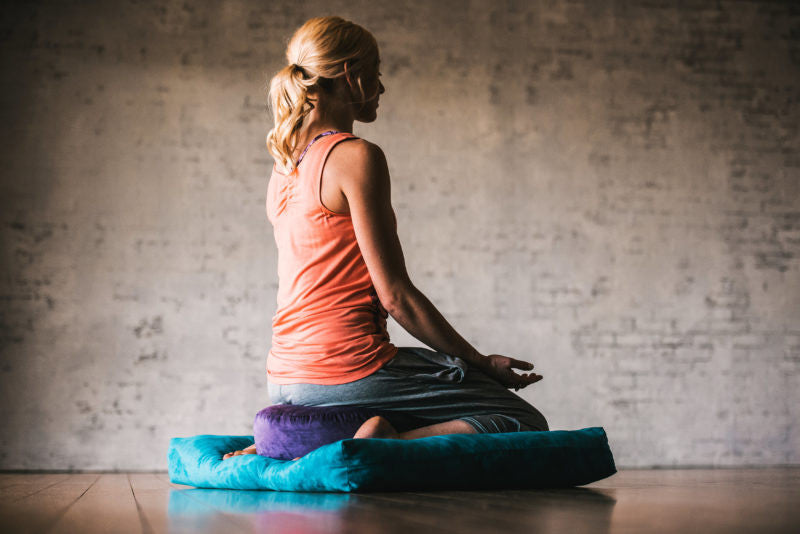How to Meditate? Grasping Mindfulness for Everyday Life
How to Meditate? Grasping Mindfulness for Everyday Life
Blog Article
How to Meditate: A Step-by-Step Strategy to Getting Mindfulness and Calmness
Reflection offers as an effective tool for accomplishing mindfulness and psychological tranquility in a busy globe. By understanding the basic concepts and methods included in reflection, individuals can cultivate a practice that improves their general health.
Recognizing Meditation
Comprehending meditation includes realizing its basic concepts and techniques, which act as the foundation for the practice. At its core, meditation is a mental workout focused on promoting relaxation, building internal power, and creating concern and understanding. The technique urges people to focus their attention, frequently with methods such as deep breathing, visualization, or rule rep.
Meditation can be categorized into various designs, including mindfulness, transcendental, and loving-kindness reflection, each with distinctive functions and approaches. Mindfulness meditation highlights present-moment understanding and non-judgmental monitoring of feelings and ideas, while transcendental reflection involves using details concepts to transcend regular idea procedures. Loving-kindness meditation concentrates on creating an attitude of love and compassion towards oneself and others.
No matter of the technique used, the main objective continues to be constant: to cultivate a much deeper understanding of the mind and its patterns. This self-awareness fosters psychological durability, clearness of thought, and an extensive sense of calmness (How to meditate?). By understanding these concepts and methods, individuals prepared for a successful reflection method that can considerably enhance their general well-being
Planning For Your Practice
Prior to beginning your meditation technique, it is vital to create an atmosphere conducive to concentrate and leisure. Select a quiet area where you are not likely to be disturbed. This can be a corner of an area, a garden, or any location that stimulates a sense of peace. Make certain that the location is clean and complimentary of clutter, as a neat atmosphere can help remove the mind.
Consider the lighting, as natural light can boost your mood and power. Soft, cozy lights is often much more soothing than rough fluorescent lights. In addition, pick a comfy temperature level, making certain that you are neither too hot nor also cool.
Including components that advertise serenity can additionally improve your experience. This may include soft cushions or blankets for convenience, along with relaxing aromas from vital oils or scent. It can likewise be beneficial to have actually a timer established for your reflection session to stop distractions from clock-watching.
Fundamental Meditation Strategies

One more efficient technique is body scan meditation. This entails psychologically scanning your body from head to toe, discovering any locations of stress or discomfort and consciously relaxing those muscular tissues. This technique promotes a much deeper link between your body and mind.

Lastly, loving-kindness reflection concentrates on cultivating concern towards yourself and others. Quietly repeat phrases of a good reputation, boosting psychological wellness and interconnectedness. Each of these methods serves as a structure for your meditation journey, permitting you to find the method that reverberates best with your individual method.
Maintaining Emphasis and Mindfulness

Developing a devoted meditation area can enhance the ability to keep mindfulness. A peaceful, uncluttered setting decreases distractions, permitting for deeper immersion in the technique. Furthermore, setting a time frame can help take care of expectations; beginning with much shorter sessions may reduce the shift right into longer methods.
Making use of techniques such as body scanning or observing experiences can also boost mindfulness. These methods motivate practitioners to stay existing and engaged with their physicality, anchoring their focus in the moment. Regular technique is important; the mind builds durability gradually, creating a more powerful ability for focus.
Incorporating Meditation Into Daily Life
Integrating reflection right into daily life can transform regular tasks into opportunities for mindfulness and self-reflection. By integrating mindfulness practices into typical tasks, individuals can cultivate a better sense of visibility and tranquility in the middle of the numerous hours of day-to-day life.
Begin by identifying moments throughout your day where you can pause and practice mindfulness. Throughout your early morning commute, focus on your breath or the experiences of the setting around you. In the kitchen, approach cooking as a reflective practice, enjoying the textures, colors, and aromas of the ingredients. Also ordinary tasks like walking or cleaning recipes can come to be possibilities for meditation by directing your focus to the experiences of activity and the noises surrounding you.
Additionally, alloting specialized times for meditation can reinforce its practice. Begin with short sessions, slowly boosting duration as you end up being a lot more comfy. Use reminders or signs-- like a certain time of day or helpful site a calming audio-- to establish consistency.
Eventually, the objective is to weave mindfulness right into the fabric of every day life, enabling you to come close to each moment with objective, consequently boosting your total sense of well-being and clarity.
Conclusion
In verdict, reliable reflection requires a quiet setting, a comfy position, and an emphasis on the breath. Normal meditation, also in short sessions, promotes web a much deeper link to the existing moment, ultimately leading to better calmness and mental quality in day-to-day life.
Meditation can be classified into numerous designs, including mindfulness, transcendental, and loving-kindness reflection, each with unique purposes and methodologies. Mindfulness reflection emphasizes present-moment recognition and non-judgmental monitoring of feelings and ideas, while copyright entails the use of details concepts to transcend normal thought procedures.With your meditation area prepared, it's time to explore different basic meditation techniques that can help cultivate mindfulness and internal tranquility.Constantly maintaining focus and mindfulness during meditation can be tough, especially for those brand-new to the technique.Developing a committed meditation area can boost the capability to keep mindfulness.
Report this page